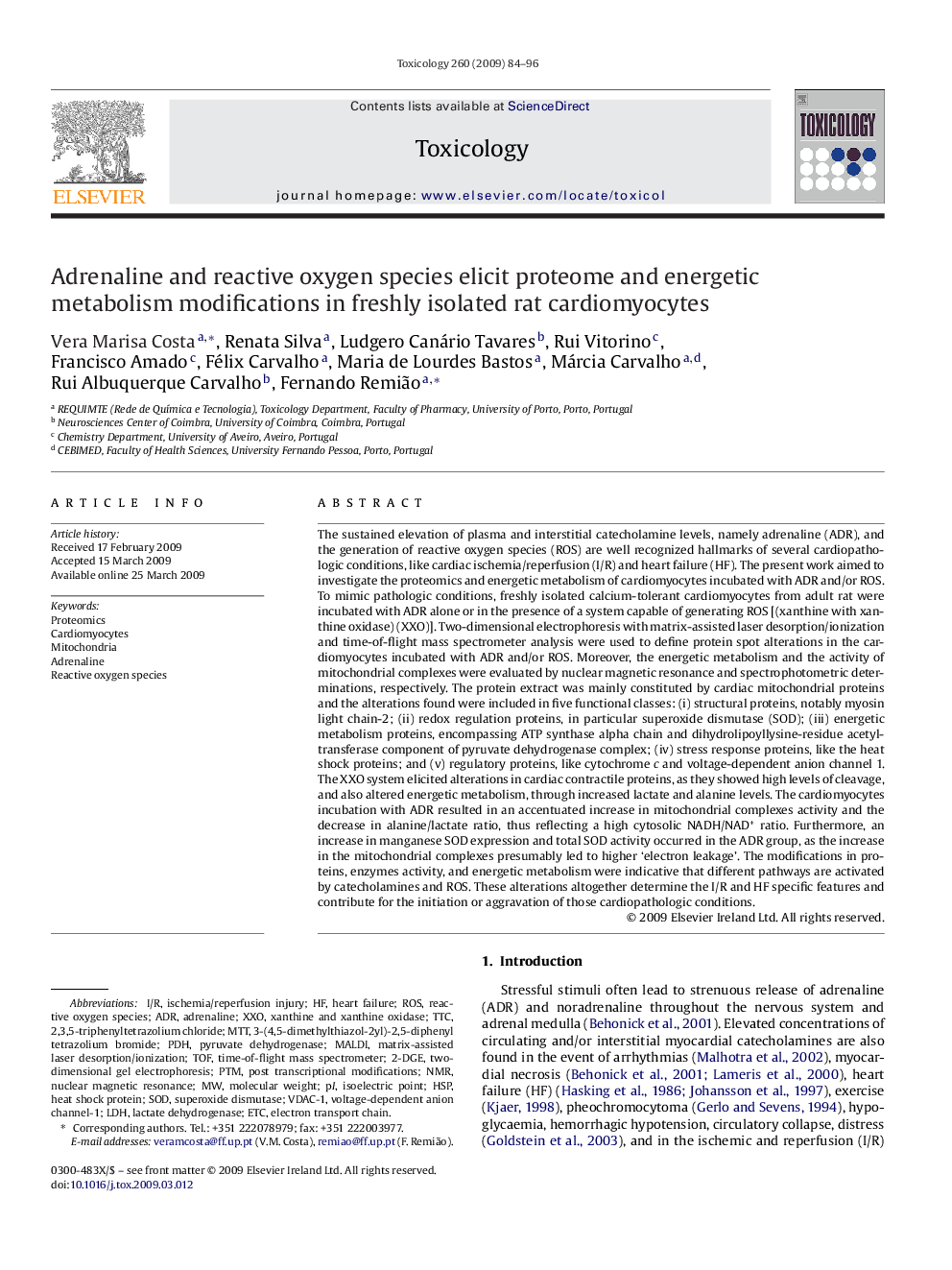| Article ID | Journal | Published Year | Pages | File Type |
|---|---|---|---|---|
| 2596848 | Toxicology | 2009 | 13 Pages |
The sustained elevation of plasma and interstitial catecholamine levels, namely adrenaline (ADR), and the generation of reactive oxygen species (ROS) are well recognized hallmarks of several cardiopathologic conditions, like cardiac ischemia/reperfusion (I/R) and heart failure (HF). The present work aimed to investigate the proteomics and energetic metabolism of cardiomyocytes incubated with ADR and/or ROS. To mimic pathologic conditions, freshly isolated calcium-tolerant cardiomyocytes from adult rat were incubated with ADR alone or in the presence of a system capable of generating ROS [(xanthine with xanthine oxidase) (XXO)]. Two-dimensional electrophoresis with matrix-assisted laser desorption/ionization and time-of-flight mass spectrometer analysis were used to define protein spot alterations in the cardiomyocytes incubated with ADR and/or ROS. Moreover, the energetic metabolism and the activity of mitochondrial complexes were evaluated by nuclear magnetic resonance and spectrophotometric determinations, respectively. The protein extract was mainly constituted by cardiac mitochondrial proteins and the alterations found were included in five functional classes: (i) structural proteins, notably myosin light chain-2; (ii) redox regulation proteins, in particular superoxide dismutase (SOD); (iii) energetic metabolism proteins, encompassing ATP synthase alpha chain and dihydrolipoyllysine-residue acetyltransferase component of pyruvate dehydrogenase complex; (iv) stress response proteins, like the heat shock proteins; and (v) regulatory proteins, like cytochrome c and voltage-dependent anion channel 1. The XXO system elicited alterations in cardiac contractile proteins, as they showed high levels of cleavage, and also altered energetic metabolism, through increased lactate and alanine levels. The cardiomyocytes incubation with ADR resulted in an accentuated increase in mitochondrial complexes activity and the decrease in alanine/lactate ratio, thus reflecting a high cytosolic NADH/NAD+ ratio. Furthermore, an increase in manganese SOD expression and total SOD activity occurred in the ADR group, as the increase in the mitochondrial complexes presumably led to higher ‘electron leakage’. The modifications in proteins, enzymes activity, and energetic metabolism were indicative that different pathways are activated by catecholamines and ROS. These alterations altogether determine the I/R and HF specific features and contribute for the initiation or aggravation of those cardiopathologic conditions.
